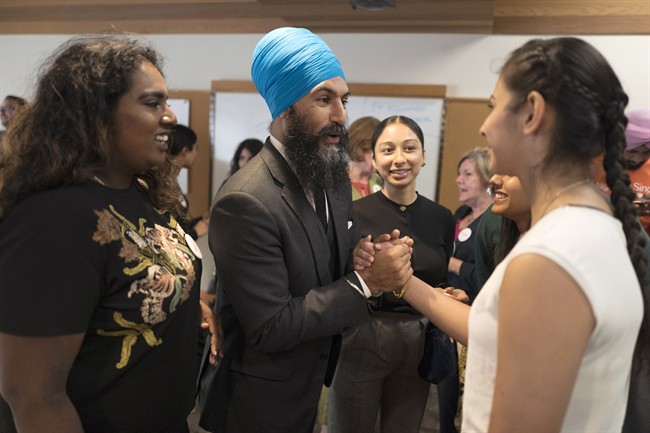The NDP heads into the first round of voting for its new federal leader. According to the Jagmeet Singh campaign, they have sold 47,000 memberships, making a first ballot win for the Ontario MPP within the realm of possibility. It also helps Singh that most of his voters are heavily concentrated, and as Chantal Hébert rightfully notes, it makes the logistics of making sure your voters actually vote much easier.

Yet with the finish line in sight, and with Singh having run a good campaign in which he has proven himself to be a viable leader for the NDP, we are once again having to deal with the NDP’s Quebec conundrum.
Back in July former NDP MP Pierre Dionne Labelle stated on the record to Le Devoir that he would be uneasy with Singh as leader because of the outward expression of his faith and stated point blankly that Quebec simply wasn’t ready for a leader that would wear ostentatious religious symbols.
More recently, current NDP MP Pierre Nantel told Radio-Canada that Singh’s conspicuous religious symbols would be incompatible with what Quebec voters are looking for. And just this week the leader of the Bloc Québécois stated that by wearing a turban, Singh signalled to voters that his primary values are religious values.
All three of the comments mentioned above reflect an uncomfortable reckoning for the NDP. Is it worth keeping the support of Quebec voters who would never vote for a party led by someone from a religious minority at the peril of vote-rich urban and suburban areas wherein the demographics have shifted dramatically in the last few decades?
By appealing to left-leaning Quebeckers who are nonchalant about a simple majority being enough to break up the country, yet extremely passionate when it comes to telling minority religions how their religion should be practiced, the NDP has always been dealing with a shaky coalition of voters.
WATCH: Coverage of the NDP leadership race
Singh’s path to victory was never going to be through Quebec. I noted his unique challenges early on and cautioned his team not to go the way of Conservative leadership contender Kevin O’Leary by recognizing the distinct challenges posed by a distinct society. This wasn’t exactly magically insightful; it was recognizing the fact that Quebeckers tend to by and large take issue with open displays of religiosity, which tend to be compounded when the religion is a minority religion.
Polling has consistently demonstrated this. A poll from CROP released in March of this year showed that over 75 per cent believe anyone in a position of authority should not be wearing religious symbols and two-thirds believe that a ban on religious symbols should apply to all public sector workers.
- Posters promoting ‘Steal From Loblaws Day’ are circulating. How did we get here?
- Video shows Ontario police sharing Trudeau’s location with protester, investigation launched
- Canadian food banks are on the brink: ‘This is not a sustainable situation’
- Solar eclipse eye damage: More than 160 cases reported in Ontario, Quebec
Another poll from Angus Reid released this summer demonstrated that while Quebeckers were in line with the rest of Canada when it came to potentially electing a leader who was an atheist, black, Indigenous, or openly gay, the province was strikingly out of step with English Canada when it came to electing a leader who wore a religious head covering or who identified as Jewish, Muslim or Sikh.
It’s true that the only time the NDP has come within spitting distance of real federal governance has been by forging a path through Quebec. In 2011, the party won 59 of its seats in Quebec out of a total 103. Contrast that to the last election, which was the NDP’s second-best federal showing, having won 16 seats in Quebec of its total 44.
It’s hard to blame NDP types for thinking so narrowly given that a strong showing in Quebec has not only proven effective, but also constitutes a natural alignment given Quebec’s high unionization rate, penchant for progressive policies, and appreciation for the official NDP policy that would see a simple majority vote of 50 per cent plus one separate Quebec from the rest of the country.
However, considering the party has approximately 4,900 memberships in Quebec out of a total of about 124,000, it seems incredibly myopic to be tailoring one’s 2019 strategy to a base that at present represents four per cent of NDP membership.
Of course, this doesn’t mean that support in Quebec can’t grow in the lead-up to 2019 — by all measures it certainly will — but why would a party intentionally risk alienating other parts of the country by constantly pandering to a voter base that has only effectively shown up once?
Nearsightedness is normally a very easy fix by one’s optometrist, and as someone who has worn glasses since the fifth grade, I’d be more than happy to suggest one for the NDP.
Supriya Dwivedi is host of The Morning Show on Toronto’s Talk Radio AM640 and a columnist for Global News.










Comments